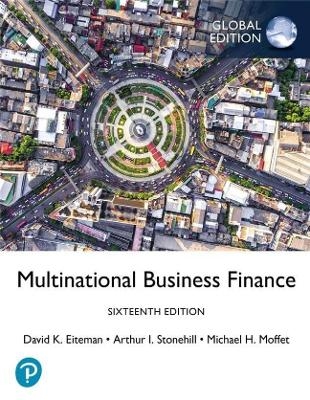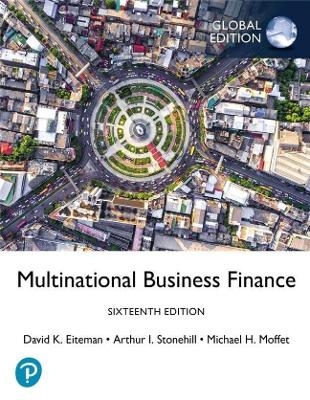
Advising Ultra–Affluent Clients and Family Offices
John Wiley & Sons Inc (Hersteller)
978-1-118-26785-1 (ISBN)
- Keine Verlagsinformationen verfügbar
- Artikel merken
A timely guide for financial professionals looking to tap into the lucrative world of the ultra-affluent The ultra affluent-defined here as those having $50 million or more in liquid assets-are an elite class who expect their financial advisors to not only preserve and grow their assets, but also help them with "soft" issues such as philanthropy and family governance. One of the biggest factors to success in this field is the relationship between the client and the advisor. In Advising Ultra-Affluent Clients and Family Offices , author and practicing investment consultant Michael Pompian provides a practical introduction to who the ultra-affluent actually are and reveals what it takes to build and maintain a solid relationship with them. Filled with in-depth insights and expert advice, this unique resource offers valuable information on issues that every advisor to the ultra-affluent must be familiar with.
Michael M. Pompian, CFA, CFP, is the director of the Private Wealth Consulting Group for Hammond Associates-based in St. Louis, Missouri-which consults to over $55 billion. He works with some of the largest family offices in the United States. Prior to joining Hammond Associates, Pompian was a wealth management adviser with Merrill Lynch, a private banker with PNC Private Bank, and served on the investment staff of a family office. He earned an MBA from Tulane University and holds a BS in management from the University of New Hampshire. Pompian is a member of CFA Institute and the New York Society of Securities Analysts. He is also the author of Behavioral Finance and Wealth Management (Wiley & Sons). Pompian is married with three sons and can be reached at mpompian@haifc.com.
Foreword xiii Preface xv Acknowledgments xvii PART ONE Introduction to Advising Ultra-Affluent Clients and Family Offices 1 CHAPTER 1 Who Are the Ultra-Affluent? 3 Defining the Ultra-Affluent 5 Quantifying Ultra-Affluence Among Total Global Wealth 10 Looking to the Future 11 A World of Opportunities for Advisers 17 CHAPTER 2 Understanding the Mindset of the Ultra-Affluent Client 19 Why Advising the Ultra-Affluent is Different 20 What Ultra-Affluent Clients Value in an Adviser 23 Building Relationships by Asking Questions and Listening to the Answers 29 Matching Client with Adviser 32 Consultant Questionnaire 33 Conclusion 37 CHAPTER 3 Wealth Attitudes, Aspirations, and Investor Behavior of Ultra-Affluent Clients 39 Family Aspirations 40 Wealth Attitudes of Ultra-Affluent Clients 42 Where Psychology Meets Finance 47 Investor Biases 48 Conclusion 60 CHAPTER 4 Noninvestment Best Practices 61 The Challenges Associated with Wealth 61 Guidelines for Sustaining Multigenerational Wealth 63 Conclusion 71 PART TWO Investment Strategies for Ultra-Affluent Clients and Family Offices 73 CHAPTER 5 Practices of the Best Investment Organizations 75 Differences between Endowments and Private Investors 76 Investment Committees 77 Investment Policy Statements 82 Key Considerations for Portfolio Oversight 88 Conclusion 93 CHAPTER 6 Asset Allocation Considerations for Ultra-Affluent Clients and Family Offices 95 What Is Asset Allocation? 96 The Importance of Assumptions in the Asset Allocation Selection Process 97 The Importance of Asset Allocation 99 Considerations in Asset Allocation for Individual Investors 100 CHAPTER 7 Domestic and International Equity 111 Introduction to U.S. and International Equity Securities 112 The Five-Step Equity Strategy Process 115 CHAPTER 8 Domestic and International Bonds 135 Introduction to Bonds 137 Descriptions of Bond Asset Classes 141 CHAPTER 9 Private Equity 159 What Is Private Equity and How Does It Work? 162 Three Primary Types of Private Equity Investments 166 Creating a Customized Private Equity Program 172 CHAPTER 10 Hedge Funds 179 What Is a Hedge Fund? 180 Hedge Fund Investing by UACs and Family Offices 185 A History of Hedge Funds 187 The Legal Environment of Hedge Funds 189 Hedge Fund Strategies 191 Manager Selection 202 CHAPTER 11 Real Assets 203 The Portfolio Benefits of Real Assets 204 Real Estate: A Long-Term Inflation Hedge 205 Natural Resources 210 PART THREE Multigenerational Considerations for Ultra-Affluent Clients and Family Offices 223 CHAPTER 12 Selecting an Adviser 225 Trust: The Key Ingredient 226 How UACs Select an Adviser 228 Questions for Prospective Advisers 234 Conclusion 237 CHAPTER 13 Selecting a Custodian and Investment Vehicle Structure 239 Custodial Services 239 Investment Vehicle Structure 250 Conclusion 257 CHAPTER 14 Considerations for Creating a Family Office 259 What is a Family Office? 261 Challenges of Wealth 262 Practical Reasons to Create a Family Office 264 Challenges of Running a Family Office 265 Services Provided by a Family Office 267 Administrative Considerations for Establishing a Family Office 268 Considerations for Establishing a Private Trust Company 274 Conclusion 277 CHAPTER 15 Wealth Transfer Planning 279 Estate Planning Basics 282 Conclusion 295 PART FOUR Special Topics for Ultra-Affluent Clients and Family Offices 297 CHAPTER 16 Concentrated Equity Risk Management 299 What Constitutes a Concentrated Equity Position? 300 Concentrated Stock Risk Minimization Strategies 304 Conclusion 315 CHAPTER 17 Family Governance 317 Generational Division 318 Family Governance: An Essential Part of Successful Wealth Transfer 319 The Incredible Family 320 Policies 326 Stages of Development 327 Conclusion 328 CHAPTER 18 Risk Management and Asset Protection 331 Family Office Risk Management 332 Individual Family Member Risk Management 337 Legal Asset Protection 341 Conclusion 344 CHAPTER 19 Philanthropy 345 Philanthropic Strategy Development through Asking Questions 347 Mission Statement 348 Implementation of Philanthropic Strategy 349 Philanthropic Investing 352 Best Practices of Giving Large Gifts to Colleges and Universities 355 Appendix: The Next Generation: Redefining the Philanthropic Landscape 358 CHAPTER 20 Multigenerational Asset Allocation Strategies 367 Different Asset Allocations for Different Generations 369 Single Allocation for an Entire Family 370 Customized Asset Allocation by Generation or Family Unit 371 Asset Allocation Targeting 374 The Behavioral Finance Approach to Asset Allocation 374 Conclusion 375 Notes 377 Index 387
| Verlagsort | New York |
|---|---|
| Sprache | englisch |
| Maße | 150 x 250 mm |
| Gewicht | 666 g |
| Themenwelt | Wirtschaft ► Betriebswirtschaft / Management ► Finanzierung |
| ISBN-10 | 1-118-26785-0 / 1118267850 |
| ISBN-13 | 978-1-118-26785-1 / 9781118267851 |
| Zustand | Neuware |
| Haben Sie eine Frage zum Produkt? |
aus dem Bereich


